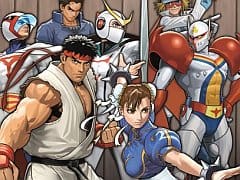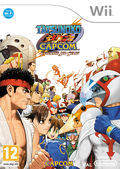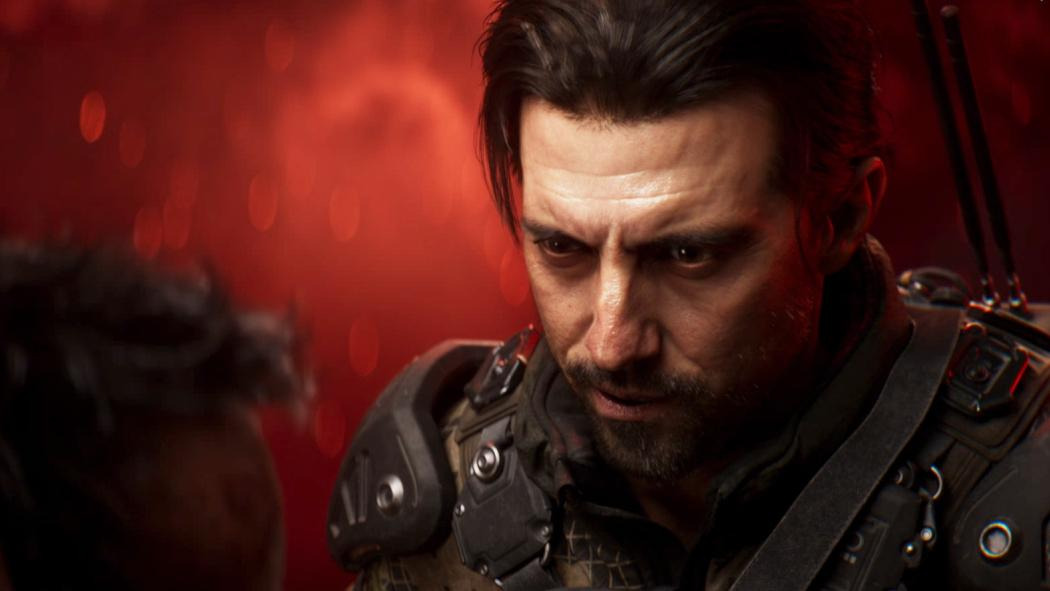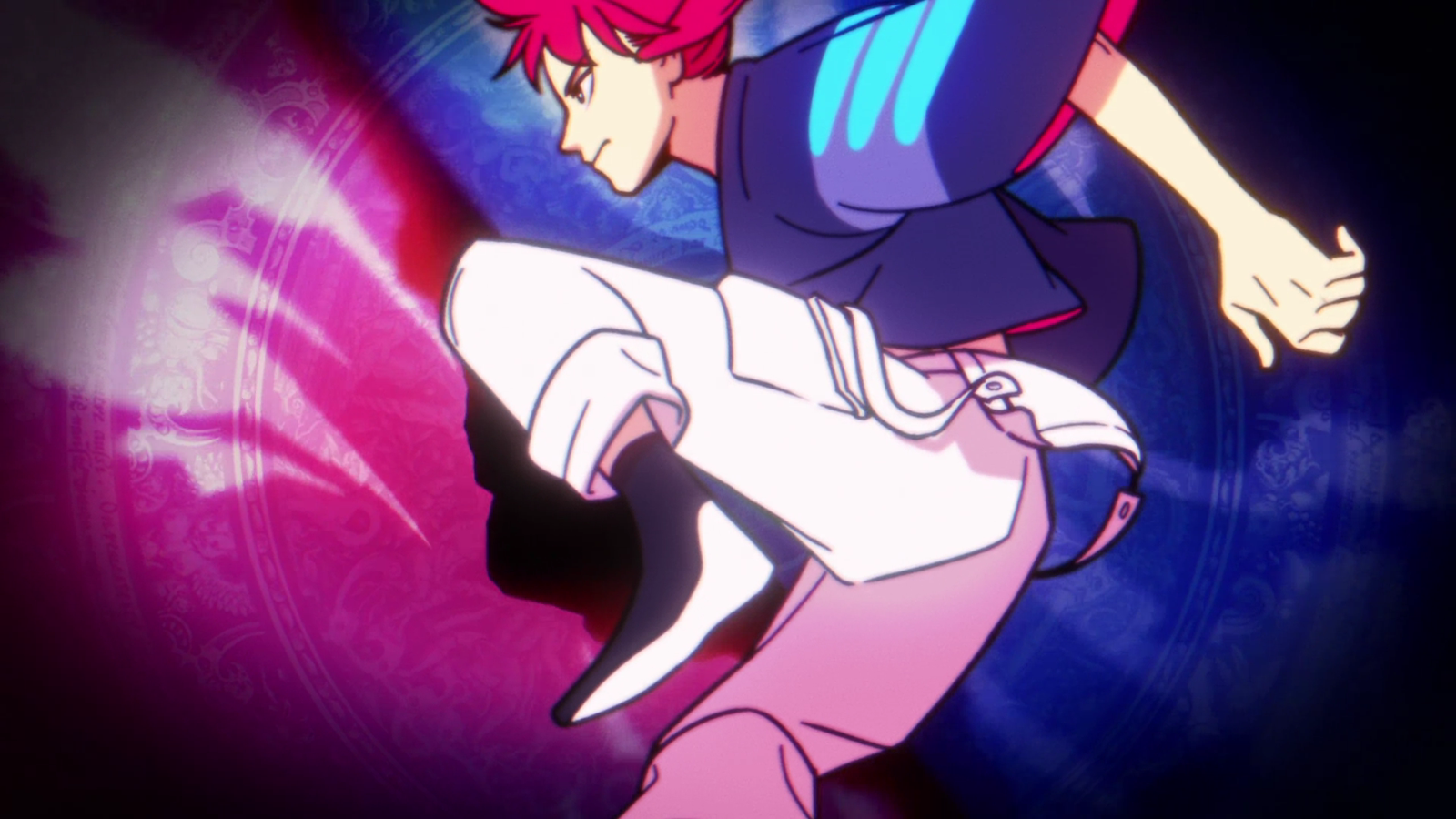You can trust VideoGamer. Our team of gaming experts spend hours testing and reviewing the latest games, to ensure you're reading the most comprehensive guide possible. Rest assured, all imagery and advice is unique and original. Check out how we test and review games here
As far as 2D fighting games go, there are few better than the fast-paced, action-packed Marvel vs. Capcom 2: New Age of Heroes. But it’s old. Ten years old, in fact. With unnerving regularity, the internet collectively wonders: “Dude, where’s my Marvel vs. Capcom 3?”
The answer is that it is a game that may never see the light of day; understandable, really, when you consider the licensing issues that would no doubt challenge such a release. Putting Iron Man in a video game these days isn’t as easy as it was back in the late Nineties. But we live in hope that one day MvC3 will whir in our disc drive.
Until that day, we’re going to have to make do with Tatsunoko vs. Capcom: Ultimate All-Stars, which is as close to MvC3 as you’re going to get this side of a Hyper Combo. The similarities are stark: It’s 2D (it’s rendered in 3D, but you know what we mean) fast-paced and action-packed.
If you’re reading this and thinking, ‘What the hell is a Tatsunoko and what’s it doing in my Capcom fighting game?’, don’t feel bad, you’re not alone. Most won’t have even heard of the Japanese animation company. You might, though – if you’re of a certain age – have heard of Battle of the Planets. It was a sci-fi cartoon that did the rounds in the Seventies, featuring androgynous heroes who battled against evil aliens as part of the G-Force. Well, Battle of the Planets was a Western dub of Science Ninja Gatchaman, a Tatsunoko cartoon. And TvC features characters from it.
For example, Ken the Eagle and Jun the Swan. They’re not the names the characters went by in Battle of the Planets, but their video game counterparts will spark a once dormant memory in the minds of childhood fans of the series. If you’re having trouble visualising it, think Power Rangers plus birds.
If the Battle of the Planets characters are obscure, then the rest of the Tatsunoko lot seem plucked from some random PVC nightmare. Casshan is an android who never goes anywhere without his trusty android dog. Polimar is a martial artist from something called “Hurricane Polimar”. Tekkaman is a space knight, and Yatterman-1 wears a blue jumpsuit. They almost all wear capes, shiny helmets and look very, very Japanese.
On the Capcom side, things are less obscure, but only slightly so. Eternal emo Ryu and mega-legs Chun-Li from Street Fighter make predictable appearances, and Frank West from Dead Rising (how did that happen?) shows up, but the rest had us scratching our heads just as much as the Tatsunoko bunch. Who can forget Megaman Volnutt, who may or may not be a relative of Megaman Walnut, or Rival Schools schoolkid Batsu? And let’s not forget Kaijin No Soki, the most powerful Onimusha (remember that?).
The 26 characters are an eclectic bunch, to say the least. But if you give the Tatsunoko lot a chance, you’ll find at least one of them grows on you. Still, you can’t escape feeling culture shocked. You just can’t. Perhaps making up for the somewhat inaccessible roster, then, is a fighting system designed to appeal to casual fighting fans as much as the hardcore.
TvC uses a four button system; three for attacks: light, medium and hard; and one for partner assist: P. It’s context sensitive, so the same button will sometimes bust out a kick, other times a punch. This streamlined system keeps things pretty simple – certainly simpler than the six button Street Fighter.
The combo system is more forgiving than those found in other Capcom fighting games, too. You can perform some impressive, high damage combos just by button mashing and repeating the quarter circle forward motion. Chaining combos is a simple matter of “linking” attacks. Light, middle and hard in quick succession – with little consideration for timing – is bread and butter stuff, even for high level play. Add a launcher on to the end of a chain combo, and you can easily follow it up with an air combo. At its most basic, you can get some good results with L, L, M, M, down forward H, up, L, L, M, M, H, Special Move. The spectacular Hyper Combos are even easier to pull off. They almost always require one stick motion, be it quarter circle, Dragon Punch or charge based, and pressing two attack buttons at the same time.
It’s significantly slower than MvC2, too, which should make it more palatable for those put off by the VS. series’ trademark blistering pace. It all amounts to a more instantly gratifying game than MvC2 and indeed Street Fighter 4. Really, there’s no reason why you won’t feel very good about yourself – no matter what your skill level – when you’re playing it.
Of course, the fighting system has the depth enthusiasts require. Some of the complex systems, like Variable Assists and Variable Attacks (basically your partner comes in for a quick attack) and Team Hyper Combos (call in your partner to do their Hyper Combo as you do your own), are universal to the VS. series. But there are one or two new features that the hardcore will have loads of fun getting to grips with.
The first is the Baroque Combo, which has absolutely nothing to do with ancient paintings. It’s sort of similar to cancelling combos with a Focus Attack in Street Fighter 4. At high levels, players use it to keep combos going when they know one of their standard attacks will miss. Also new is the Cross-Over Air Raid, which, again, is designed to keep combos going. Here, a fireball motion and P will call in your partner mid air combo, allowing you to continue dishing out damage. On the defensive side of TvC’s fighting system is the Mega Crash (all four buttons), which is like a “get out of a combo free” card. It creates a barrier around your character, which sends your opponent flying backwards once touched. It’s incredibly useful, which is probably why it consumes the Hyper Combo Gauge and a bit of your life bar.
TvC’s fighting system is built upon a simple premise: cause as much damage as you can with multi-hit combos. The game might be streamlined and simplified compared with previous VS. titles, but the combos are no less devastating. Some characters can even do combos of the hundred hit variety, and they cause, literally, billions of points of damage. But it’s all relative. Your average TvC match lasts five minutes, depending on the skill level of the fighters. Each of your opponent’s characters’ life bars must be depleted in order to win, and, despite how spectacular some of the attacks are, that can take a while.
Undoubtedly, it’s a lot of fun, albeit in a somewhat throwaway manor. The game’s fighting system is deep, and its roster well balanced – pretty much every character is viable, which is one hell of an achievement – but it doesn’t quite reach the heights of Street Fighter 4’s strategic brilliance or the heart-pounding thrills of MvC2. And then there’s the inescapable truth: half the roster is made up of unknowns. Doronjo and Karas going up against Ippatsuman and Roll doesn’t have draw of a Spider-Man, Zangief and Cable versus Wolverine, Jill Valentine and Magneto match-up. This can’t be denied.
Beyond criticism, though, are the graphics. The game is a cel-shaded 2.5D fighter like Street Fighter 4, which means that while the fighting takes place on a 2D plane, everything is rendered in wonderful, eye-catching 3D. Every fighter is beautifully animated, with attacks that blend together as seamlessly as Nesquik and full-fat milk. From a distance some of the Tatsunoko characters look similar, but up close the level of detail is quite impressive, and sets them apart. The backgrounds are great, too. Some we’d even argue are up there with those found in Street Fighter 4. In short, TvC looks fabulous, and is certainly the best-looking fighting game on the Wii.
Making the game a more attractive purchase for those who aren’t fortunate enough to live near like-minded mates is a pretty robust online system – surprisingly so for the Wii – which features free, ranked, friend and rival battles (the game will even tell you when your rivals are online). Battle Points are gained for winning ranked matches, and there’s a ranking ladder to climb up. Unfortunately, though, the online game is pretty bare bones. There’s no spectator or lobby system, for example. The important thing, however, is it works, and we didn’t encounter much lag at all.
The sheer quality of TvC makes Capcom’s decision to release the game exclusively on the Wii all the more surprising. It surely would have found a greater audience on Xbox LIVE and PSN. Indeed, the console it’s least likely to find an audience with, we reckon, is the Wii. The Wii Remote and Nunchuck combo is a depressingly cumbersome way to play the game. A Game Cube controller, or Classic Controller, is the minimum requirement. The hardcore won’t touch the game without a fighting stick.
Perhaps TvC is a test, then. If it sells even remotely well, maybe we’ll see a sequel on Microsoft and Sony’s consoles. Or maybe, fingers crossed, it’ll add further weight to the case for MvC3. Until then, we’ll just have to make do. Luckily for Wii owners, having to make do isn’t so bad after all.

/https://oimg.videogamer.com/images/ec73/tvc_10.jpg)
/https://oimg.videogamer.com/images/a5ac/tvc_72.jpg)






